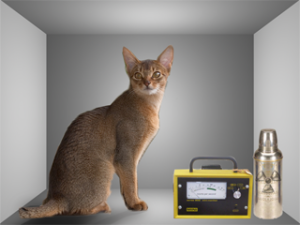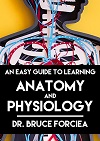Just wanted to share a short essay I wrote about information and thinking. I do a lot of research for my writing in science fiction and sometimes get lost in thought about these topics thinking about how I could incorporate them into a new story. Don’t worry…my stories are not this complicated but I do try to incorporate elements of subjects like quantum mechanics, physics, genetics and biology in an effort to create more realistic stories. Keep in mind I’m not a scientist.
Here we go…
One of the many concepts in quantum mechanics that is really hard to get a handle on is the idea of quantum superposition of various states. This was a difficult concept for many great scientists as well and many still wrestle with the implications of things being in more than one place at a particular time. Now this may be all fine and good for microscopic particles but we usually don’t pay much attention to these in our daily lives. What we do pay attention to are what are known as macroscopic events. These events are something we can sink our teeth into.
So this poses the question; do macroscopic events still have quantum mechanical properties? In 1935 when quantum mechanics was still in its infancy, one of its developers, Erwin Schrodinger came up with a thought experiment that attempted to link microscopic quantum events with the macroscopic world we witness unfolding before our very eyes. Schrodinger’s thought experiment was meant to demonstrate just how bizarre quantum mechanics was.
Schrodinger’s thought experiment came to be known as Schrodinger’s Cat. The experiment consisted of a cat sealed in a box containing a vial of poisonous gas. The vial was connected to a radioactive atom. If the atom decayed a mechanism containing a Geiger counter would record the decay breaking the vial and killing the cat. If the atom did not decay then the cat would remain alive (remember this was a thought experiment, no cat was ever harmed). The decay of a radioactive atom is a microscopic quantum event while the death (or life) of the cat is a macroscopic event.
The idea was to set the experiment in motion and then open the box in one hour. Of course one of two possible things would happen. The cat would either be dead or alive depending on whether the atom decayed or not. There was a 50% chance that the atom would decay within an hour. The important question was what state the cat was in during the hour. Was the cat in a state of superposition of half-alive or half-dead? Did the cat’s future rely on an external observer whose consciousness determined the outcome?
We can learn something about reality from Schrodinger’s cat. Is there an underlying plan to the universe or is the decay of the atom a truly random event? Do observers exhibit some sort of control over inderterminate macroscopic states or are we just observing the predetermined outcome?
According to Neils Bohr and Werner Heisenberg, two scientists who also contributed to quantum mechanics, the cat remains in a state of superposition until an observation is made. In other words the cat is both alive and dead until a measurement of the decayed atom was taken. The measurement either by a conscious being or non-conscious Geiger counter collapses the wave function and determines the outcome. In other words observation by a conscious being forces the system to make a choice (dead versus alive). This interpretation is known as the Copenhagen interpretation.
Another interpretation was posited by John Wheeler and Hugh Everett. According to these esteemed scientists the cat does not exist in a state of superposition but exists as living in one universe and dead in another. Every time an inderteminate state exists the universe splits off into multiple realities of which one is observed by us and the other observed by our twin counterparts in a “mirror” universe. This means that all possibilities exist in alternate universes. For example your football team may consistently win the Superbowl in one of these alternate universes. This multiple universe solution requires an infinite number of universes splitting with each quantum event and is a costly solution to the paradox.
From a deterministic point of view there is the hidden variable solution. The hidden variable solution posits that all decisions have already been made. The universe is ultimately deterministic. There is some controlling force (such as a God) that exerts an ultimate control over all events. In this solution the fate of the poor kitty has already been determined. There is no randomness to the event. Likewise every time you roll some dice the outcome has already been determined by some universal entity. Every thought, action, decision, and casino game outcome has already been determined.
Another version of the Copenhagen interpretation is known as the idealist interpretation as presented by the likes of the great thinkers John Von Neumann, Eugene Paul Wigner, Fritz London and Edmond Bauer. They say that consciousness must collapse the wave function to determine the outcome of the cat. This solution has gained popularity and is well accepted.
According to Amit Goswami (p 83):
“The consciousness resolution of Schodinger’s paradox is the most straightforward one—so much so that it is sometimes referred to as the naïve resolution.”
One potential problem with the consciousness solution (sometimes known as the idealist interpretation) is known as the paradox of Wigner’s friend. In this paradox Wigner’s friend makes the observation and reports it to Wigner. Does the cat remain in an indeterminate state while Wigner’s friend is walking over to report to Wigner? Let’s also say that Wigner and his friend open the box and make a simultaneous observation of the state of the cat. In this case whose consciousness chooses the outcome?
Wigner’s friend only poses a problem if he is understood to have a separate consciousness from Wigner. The paradox melts away with the premise that both Wigner and his friend share one universal consciousness. The collapse occurs in the same manner whether Wigner or his friend make the observation. If this holds up experimentally (and it does) then there is evidence for one universal consciousness of which we are all a part of as opposed to us all having separate consciousnesses.
Quantum information theory provides another explanation similar to that of Wigner’s friend. In this case the cat acts as the detector and is entangled with the observer. The observer (Wigner or his friend) agree on the observation completely because they are part of the system including the atom and Geiger counter.
A more recent solution to Schrodinger’s cat, and one I find most exciting has to do with understanding superpostition in terms of information. This is known as the information-theoretic approach (Johannes Kofler and Anton Zeilinger, 2006). In this approach indeterminate states are seen as lacking information. As information enters the system superposition ceases to exist.
The authors state:
“The quantization of nature is a consequence of the quantization of information. Moreover, reality and information are two sides of the same coin. It does not make sense to talk about reality without the notion of information about it, and it is pointless to talk about information without something where it refers to. What can be said about reality, defines what can exist.”
According to the information-theoretic approach, consciousness somehow creates information about events. Consciousness forms relationships that work to produce a contextual structure that helps us to define our reality.
I would then conjecture that based on this interpretation the addition of information to an indeterminate system decreases randomness of the system. As we work to make contextual relationships (which seems to be what we our minds are designed to do) we reduce randomness. Perhaps this may provide an answer as to how such phenomenon as intention influencing quantum random event generators or the effects of consciousness on other indeterminate events in our world operates.
The X-Cure-Sci-Fi Thriller Anatomy and Physiology EBook Non-Fiction, Healing, Wellness
References:
Johannes Kofler and Anton Zeilinger. Article in: Sciences et Avenir Hors-Série Le paradoxe du chat de Schrödinger No. 148, October/November 2006)
Amit Goswami: The Self-Aware Universe. 1995. Tarcher pub.
Image from: https://commons.wikimedia.org/wiki/File:Schr%C3%B6dinger_cat.png



